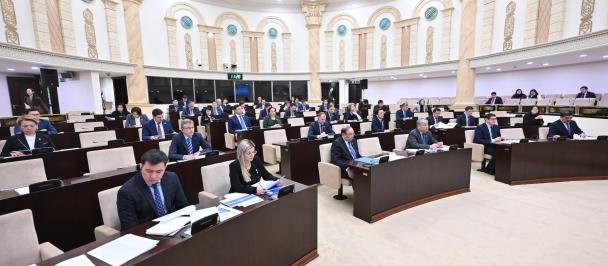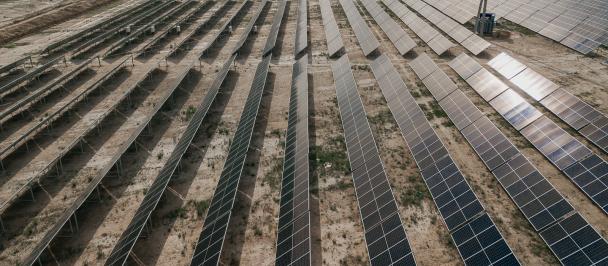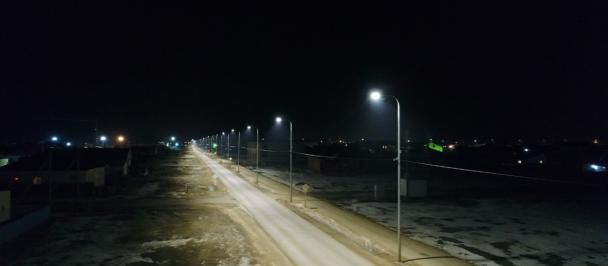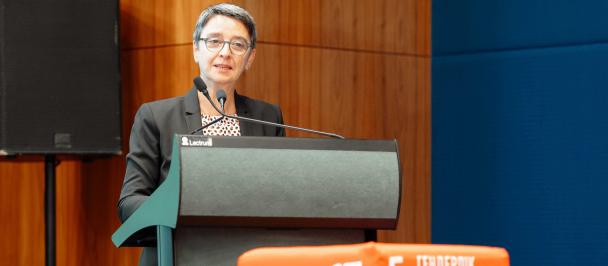Speech at the meeting of the Parliamentary Commission on monitoring of the SDGs: clean energy
February 23, 2024

Your Excellency Chair of the Senate Mr. Ashimbayev,
Esteemed members of the Parliament and the Government,
UNDP is honored to be part of the first Parliament session on SDGs this year.
During the 7th SDG Coordination Council meeting in January, a crucial decision was made to review the current national SDG indicators.
We analyzed the draft National Development Plan 2025 – 2029 and noted only 36 percent of SDG targets are integrated (60 targets out of 169) and only five national SDG indicators are currently incorporated. This is an observation that needs to be considered during further discussion of the National Plan.
SDG 7, "Clean and Affordable Energy," comprises of five targets and six indicators. Out of these, only three indicators are on track to be achieved by 2030.
The country's current trajectory suggests that progress on the following key indicators by 2030 needs more effort. The share of renewable energy in total final energy consumption has stagnated, decreasing from 2.07 percent in 2016 to 1.78percent in 2021. Energy intensity, measured in terms of primary energy and GDP, has decreased from 6.22 percent in 2016 to 5.78 percent in 2021. International financial flows in support of clean energy research and development, including renewable energy production, have also stagnated, falling from US$49.8 million in 2015 to $42.6 million in 2021.
Target 7.2 indeed serves as a crucial accelerator for advancing the entire SDG agenda within the country. Renewable and clean energy not only supports the transition to a low-carbon economy (Target 12) but also plays a key role in mitigating climate change by reducing greenhouse gas emissions (SDG 13 "Climate change"). Prioritizing this target can lead to significant positive impacts across multiple SDGs.
With that let me briefly turn your attention to Regional SDG Platform - an open-source tool that provides SDG-specific data for government, academia, and expert circles, including members of parliament. It demonstrates progress on the SDGs, shows current trends, and links with internal policies and long-term priorities. Additionally, it allows for the identification of vulnerabilities and areas of concern.
The existing energy system of Kazakhstan causes almost 70 percent of CO2 emissions, fueling climate change with its devastating effects. Globally this indicator averages 60 percent. Therefore, the biggest challenge for all nations today is to ensure the transformation of the global energy system.
The country has seen a rapid uptake of large-scale green energy projects with its vast potential for renewable sources of energy like wind and so on. However, integrating renewable energy sources into the grid presents significant challenges. Significant investments will be needed to build flexible and storage capacities, introduce demand-side response to ensure the reliable and efficient operation of the grid while maximizing the potential of renewable energy sources.
Secondly, according to our estimations, the implementation of 5-10 percent of the potential of households for small-scale renewables in Kazakhstan is equivalent to the construction of a coal-powered plant with a capacity of 500 – 1000 KW. This segment holds significant untapped potential.
The important point I would like to address is energy efficiency, which represents a low-hanging fruit for Kazakhstan. The country's economy ranks as one of the most energy-intensive in the world. Recent estimates indicate that while there is positive momentum in the industrial sector, the housing, public, and commercial sectors are experiencing growth in total energy consumption reaching 46.8 percent.
UNDP pilot projects have identified a niche for Energy Service Company (ESCO) businesses, estimated at $2.7 billion. To facilitate the development of the local ESCO market, conducive conditions need to be created. Currently, in collaboration with the Ministry of Industry and Construction, we are working on establishing an Energy Efficiency Fund, which will provide various forms of support to such companies.
I believe that the amendments to the Law of the Republic of Kazakhstan On Energy Saving and Energy Efficiency Improvement, adopted by the Parliament in 2022, will address these challenges.
The last point, which is truly pivotal, concerns the funding of this transformation. We speak often about just transition in the context of developing countries that do not emit much, however, this just transition needs to also apply to Kazakhstan.
Realistically, within the context of Kazakhstan, it involves a significant structural change to the economy, trade, and production bases.
Prioritizing sustainable and low-carbon infrastructure through more effective domestic resource allocation in the national budget is crucial. UNDP advocates for ending fossil fuel subsidies as a vital step towards divesting from fossil fuels and investing in both people and the planet. Eliminating fossil fuel subsidies could generate additional government revenues of up to 803 billion tenge per year from major taxes. Redistributing these revenues could result in a 35 percent reduction in greenhouse gas emissions, a 20 percent increase in GDP growth, and a 5 - percent rise in employment by 2060. This demonstrates that reforming subsidies, along with factoring in greenhouse gas emissions costs, makes economic sense for decarbonization.
Kop rakhmet!

 Locations
Locations



